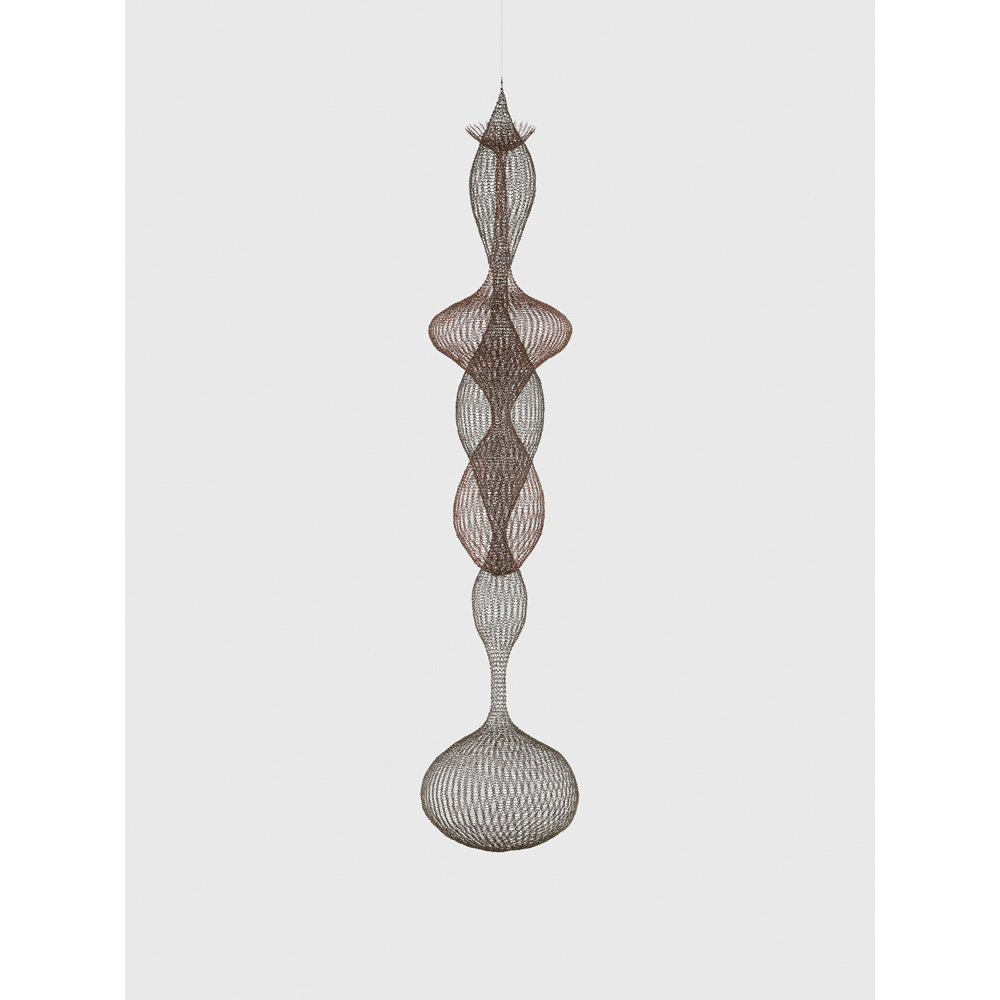ART CITIES:N.York-Ruth Asawa
 Born in rural California in 1926, Ruth Asawa is best known for her looped-wire sculptures, which challenge conventional notions of material and form. She began creating the light, transparent works in the late 1940s while a student at Black Mountain College in North Carolina, where she was influenced in particular by her teachers Josef Albers and Buckminster Fuller.
Born in rural California in 1926, Ruth Asawa is best known for her looped-wire sculptures, which challenge conventional notions of material and form. She began creating the light, transparent works in the late 1940s while a student at Black Mountain College in North Carolina, where she was influenced in particular by her teachers Josef Albers and Buckminster Fuller.
By Efi Michalarou
Photo: David Zwirner Gallery Archive
The exhibition “All Is Possible” situates Ruth Asawa’s iconic looped- and tied-wire sculptures in the context of her e drawings and her lesser-known sculptural forms, offering viewers one of the most comprehensive looks at this artist’s work to date. This larger context illuminates an artist in pursuit of form as a means to reshape how we see and perceive the world as well as offering a model for thinking about the avant-garde’s long-held desire to place art and life in a permanently dynamic conversation. An influential artist, devoted activist, and tireless advocate for arts education, Asawa is best known for her extensive body of hanging wire sculptures. These intricate, dynamic, and sinuous works, begun in the late 1940s, continue to challenge conventional notions of sculpture through their emphasis on lightness and transparency. Relentlessly experimental across a range of mediums, Asawa also produced numerous drawings and prints that, like her wire sculptures, are built on simple, repeated gestures that accumulate into complex compositions. Asawa moved effortlessly between abstract and figurative registers in both two and three dimensions, creating a vast and varied oeuvre that, despite its visual heterogeneity, reflects above all her belief in the total integration of artistic practice and family life. Included in this exhibition are a selection of “meander” drawings, a motif that emerged from exercises assigned by Josef Albers in his legendary Basic Design class at Black Mountain College, which Asawa attended in the late 1940s. This undulating pattern, created with a spiraling line, suggests a field of fluctuating positive and negative forms akin to the interplay of inside and outside that Asawa would conjure in her “continuous” looped-wire sculptures. The meander found perhaps its greatest expression in the two enormous redwood panels, also on view, that Asawa meticulously carved on both sides with her children as the doors for their family home over the course of the summer of 1961. A selection of looped-wire sculptures in a range of scales and formats are additionally featured. An exceptional six-lobed continuous form made of copper and brass wire that was originally owned by Mae Lee, Asawa’s friend, neighbor, and sometimes assistant who helped her with a number of her public commissions, including the fountains she designed for San Francisco’s Ghirardelli Square and the Grand Hyatt Plaza, will be presented publicly for the first time since 1958. Likewise, one of the few groupings in her oeuvre, three “open-window” forms—one of the most technically complex shapes in Asawa’s repertoire—last seen in the 1960s, will be included. Asawa’s lesser-known drawings of the minutiae of everyday life—sleeping children, garden plants, and cane and wicker chairs—as well as the ceramic masks of her friends and many visitors to her home, which she would habitually cast in plaster, provide an intimate glimpse into the day to day. Placed in dialogue with the voluminous tied-wire sculptures she devised in 1962, frustrated by her attempts to draw in two dimensions a desert plant whose branches split exponentially, these works illuminate Asawa’s near-constant devotion to her creative pursuits and distinct way of seeing the world around her.
Photo: Ruth Asawa, Untitled (S.237, Hanging Six-Lobed, Interlocking Continuous Form), c. 1958, Private Collection, © 2021 Ruth Asawa Lanier, Inc. / Artists Rights Society (ARS), New York. Courtesy David Zwirner
Info: Curator Helen Molesworth, David Zwirner Gallery, 537 West 20th Street, New York, NY, USA, Duration: 4/11-18/12/2021, Days & Hours: Tue-Sat 10:00-18:00, www.davidzwirner.com
